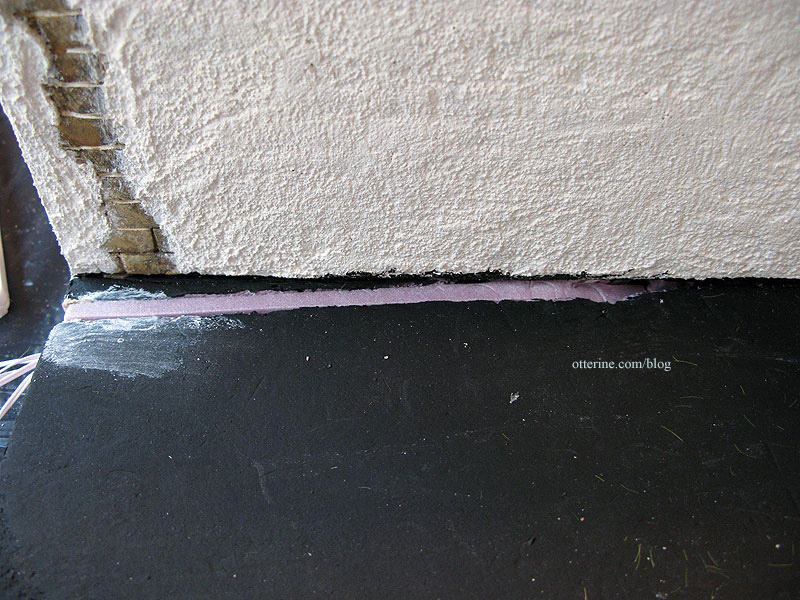Nothing brings a miniature build together quite like lights, but wiring a structure always has challenges.
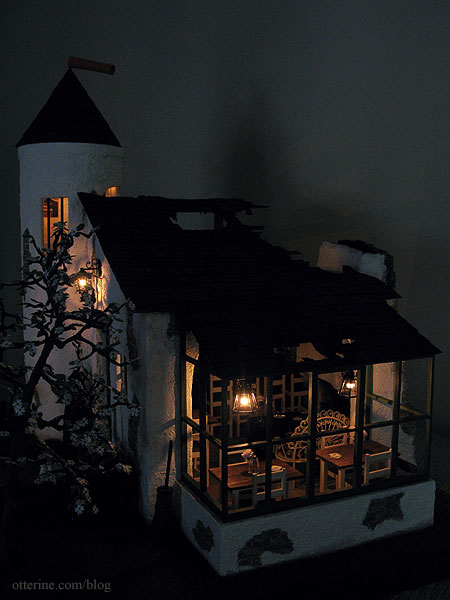
This was my first time working with builders foam for landscaping and building walls, but it won’t be my last. It was a great material for hard wiring the lighting, too.
Before I glued the base of The Aero Squadron Lounge onto the landscaping board, I cut wire channels that would run underneath. I draped twine inside the channels so I could tie the wires to it and then pull the wires through the channels later in the build. You’ve probably noticed these strings in the posts I’ve been writing about the tower and main room construction.
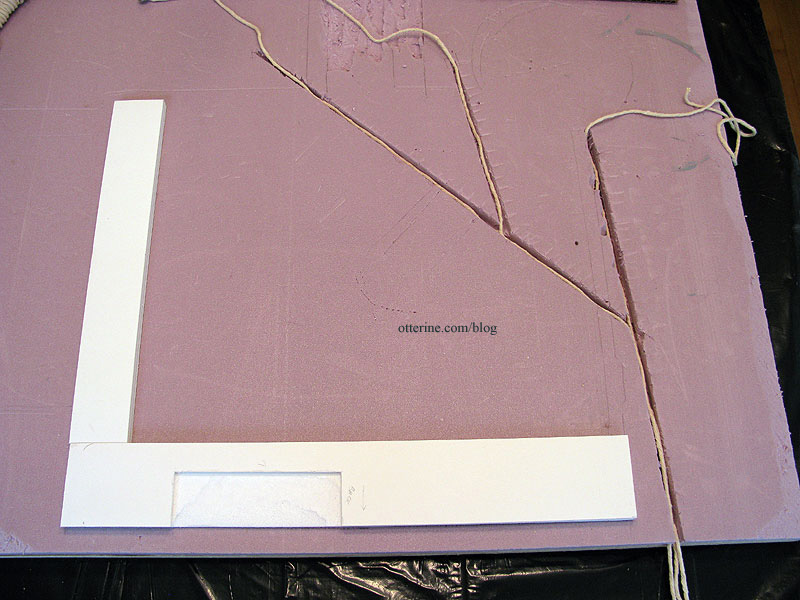
The front door carriage lamp was the first light to be installed but I don’t have good photos of what I did.
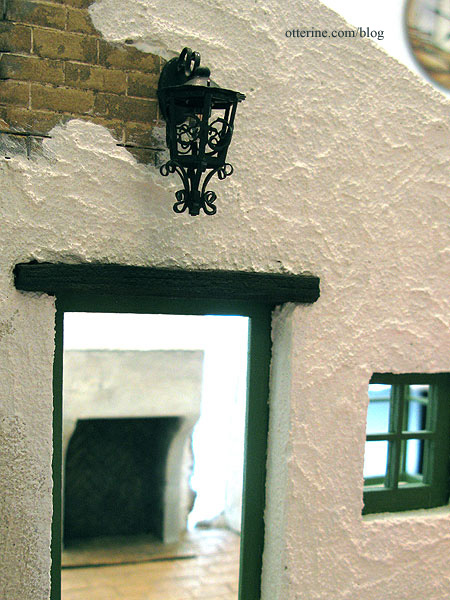
I poked a bamboo skewer into the foam to make a wire channel and pulled the wire up toward the roof. I used the skewer to then make a channel toward the join with the tower. On the side of the front wall, I cut a channel into the foam so the wires would run toward the ground and through the baseboard channel.
Fortunately, I did take better pictures when I wired the three hanging lights over the three tables inside. For the one over the pub table by the front door, I cut a channel into the balsa wood beam and pulled the wire through the front wall. I then painted the wire to match the beam. This was the only wire that might possibly be noticeable if left white.
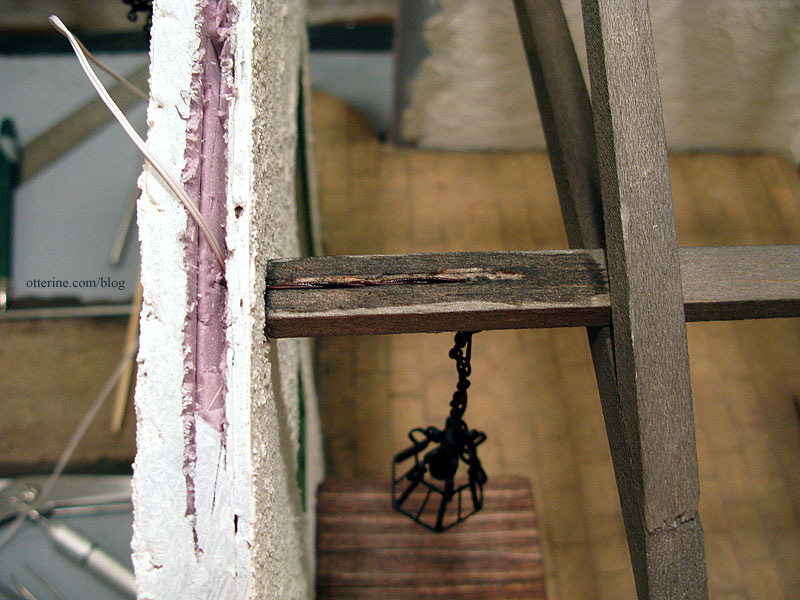
For the other two hanging lights, the roof rafters covered the channels made in their respective beams.
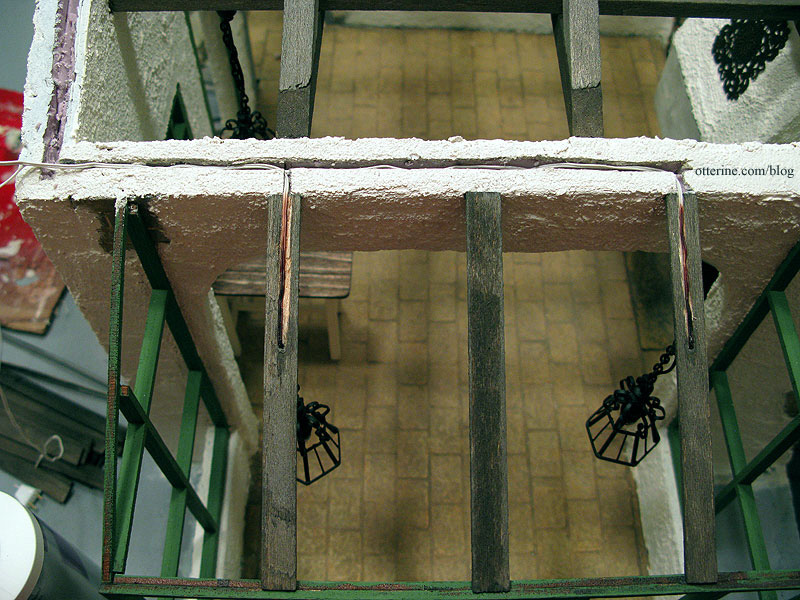
I cut a channel into the builders foam all along the top edge leading toward the earlier channel made for the front door carriage lamp.
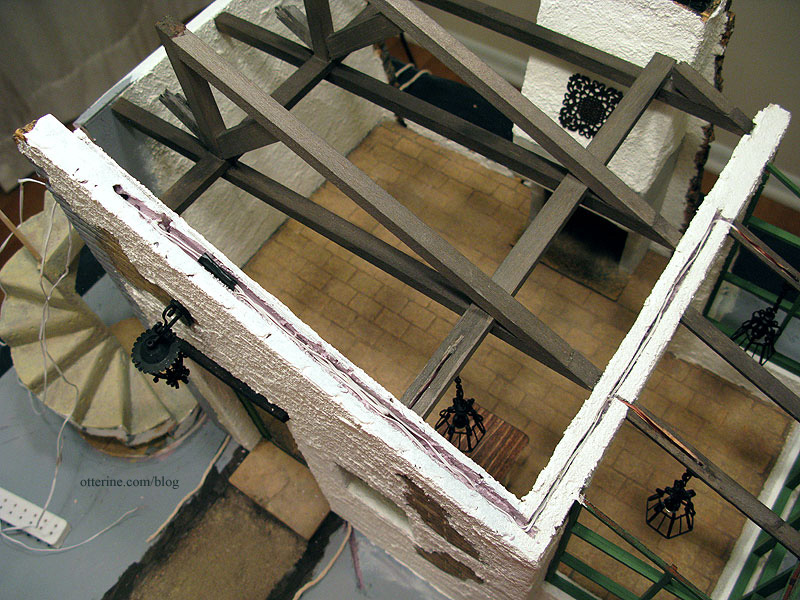
I used a length of tubing to feed the wires through the channel.
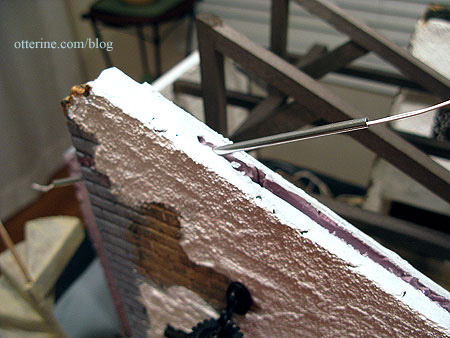
I taped all the wires to the twine and pulled the twine through the channel.
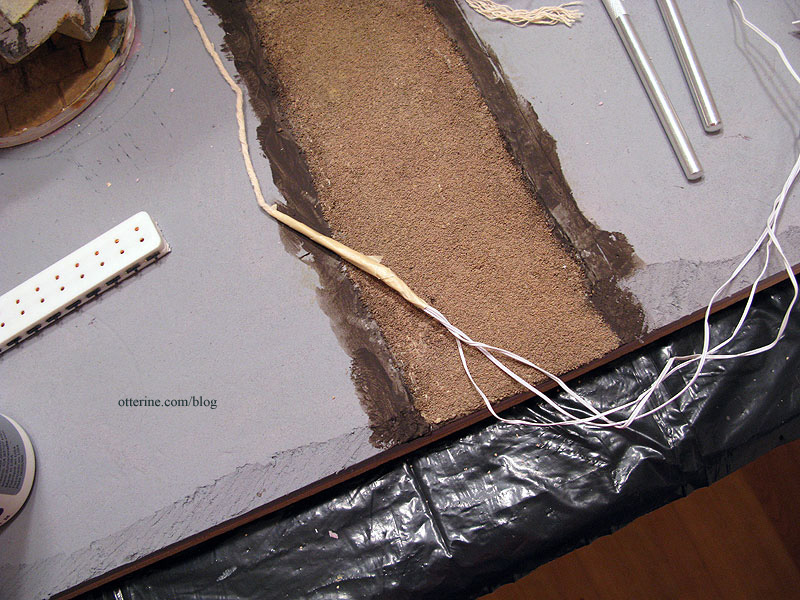
Once I cut the twine from the wires, I fed them into the side baseboard channel toward the back and to the power strip. The remaining length of twine here is for the tower light.
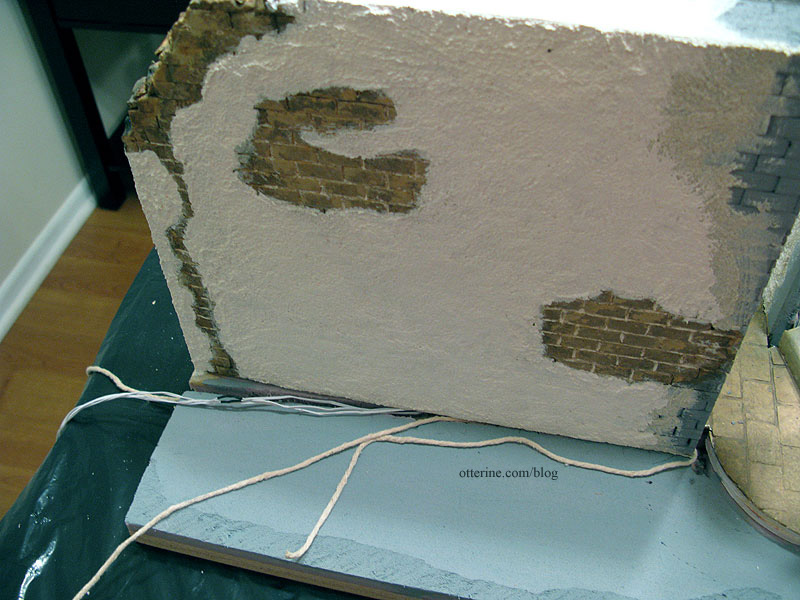
I pressed the wires into the side wall channel on the front wall. Once the tower was attached, this would be sealed up with stucco.
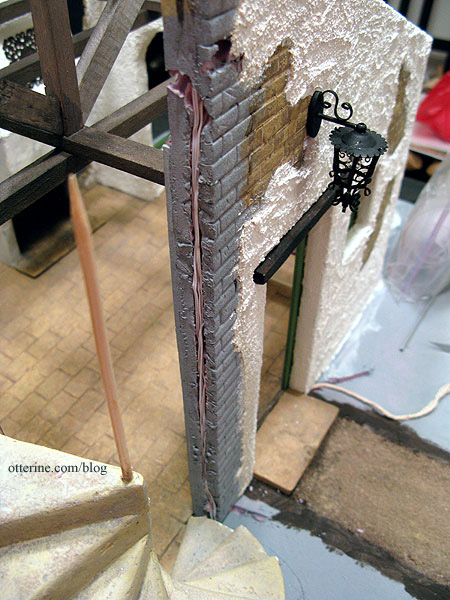
The front spotlight was fairly straightforward as well. I bought a pack of two Scene Master spotlights on amazon.com but used only one of the pair included in the package.
Once I knew where I wanted the spotlight, I cut a further channel to it from the other baseboard channel. I ran a length of wire underneath the house and left a small bit exposed to wire the light. I had to plant the grass before I could install it.
I filled in the channel with leftover stucco when I added the dogwood tree base, where I used stucco to sculpt the hill. I filled in the other front baseboard channel with stucco after attaching the tower. You can see where I adjusted the channel at the front of the board.
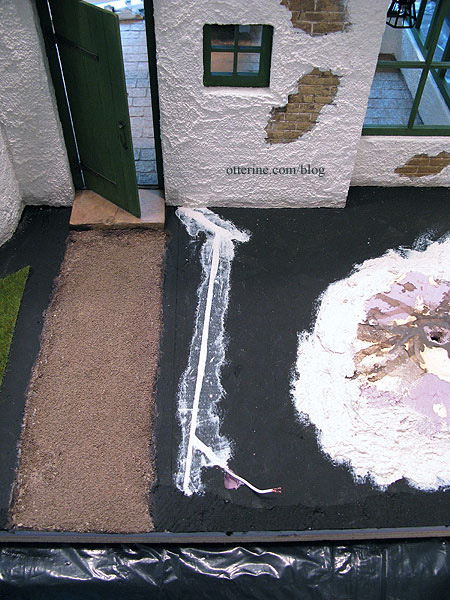
Once the grass was planted, I was able to wire the spotlight. I cut the spotlight wires short and then spliced them to the exposed wire from the ground.
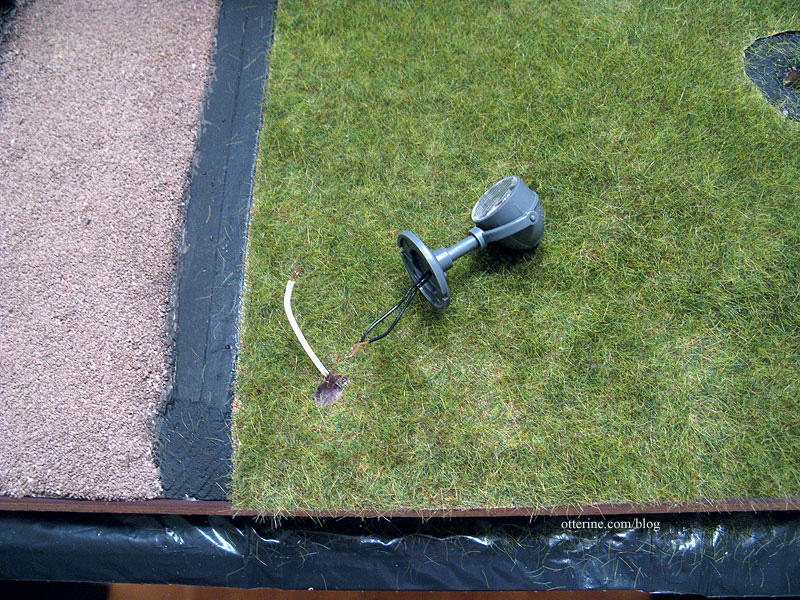
I made a small hole in the ground to sink the spliced wires into.
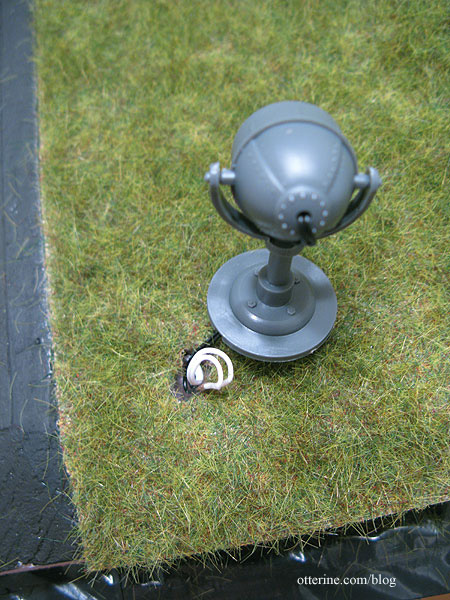
I glued the spotlight to the grass over the hole.
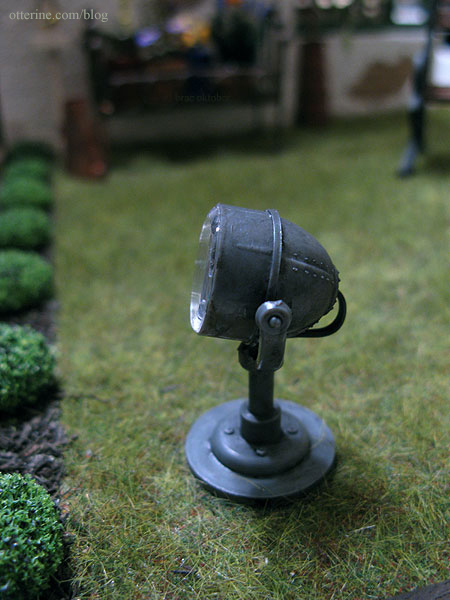
As noted in a previous post, the bar lights are operated by a 9V battery.
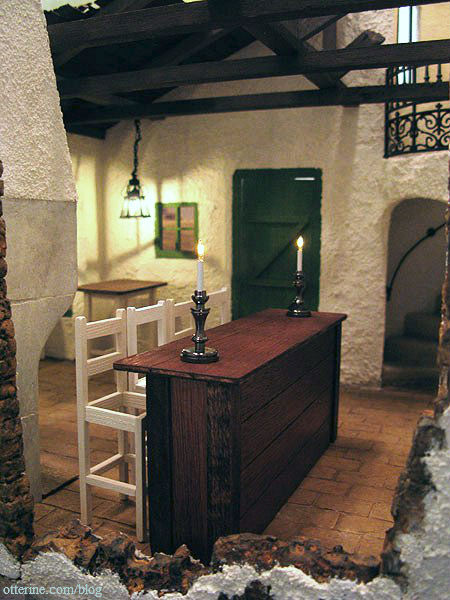
To keep the bar removable, I wired the two lamps to a 9V battery adapter with an on/off switch from Evan Designs. Ingenious, right? Ha! There are two main issues with this idea. First, the bar is definitely removable, but it is hard to get it back into place without the wires sticking out…very fiddly. More importantly, the battery doesn’t last long and the candlesticks are very dim. I tried wiring each lamp to its own battery but the difference in brightness was negligible and it doubled the fiddly nature of trying to get the bar in place with two battery assemblies fighting for freedom. What I should have done was made a plug in the floor.
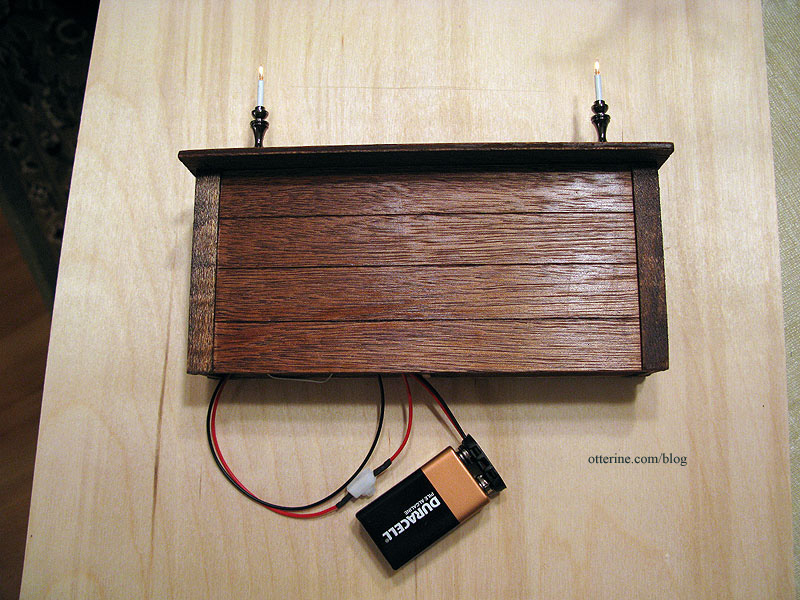
The lit fire is an acrylic log piece with a red bulb. I drilled a hole for the bulb to fit through the bottom of the egg carton hearth, and its wire runs inside a channel through the baseboard foam along the back.

Since the fireplace is removable, I have a small recess where the wire and bulb can curl into when the fireplace is removed.
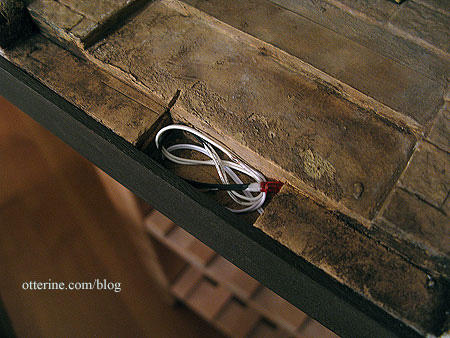
However, now I see Minimum World has a battery operated flickering fire light that would certainly make removing the fireplace less of a hassle. (Update: I installed the Minimum World battery light here.)
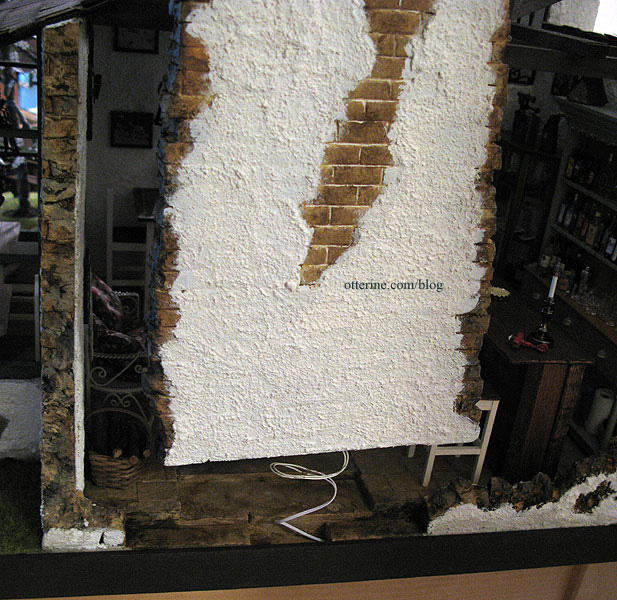
Close-up of the recess and fireplace wire.
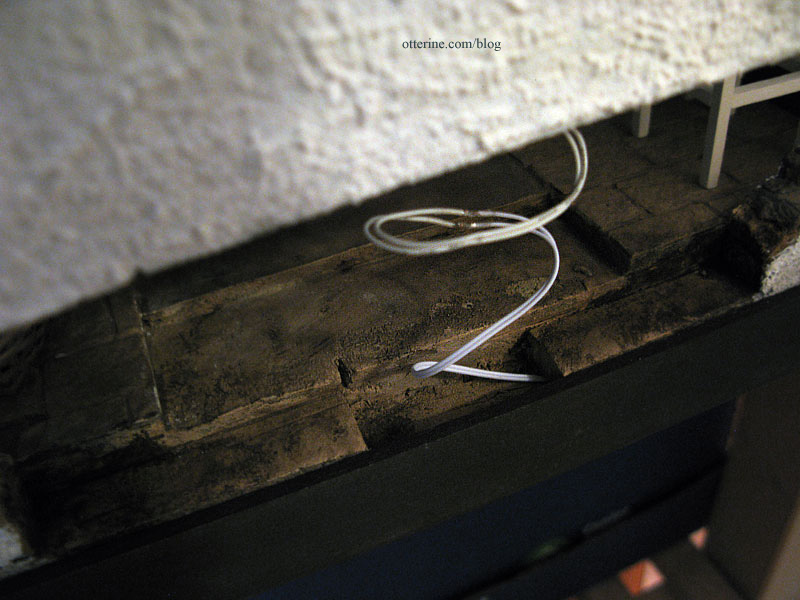
The most challenging light to wire was the tower light.
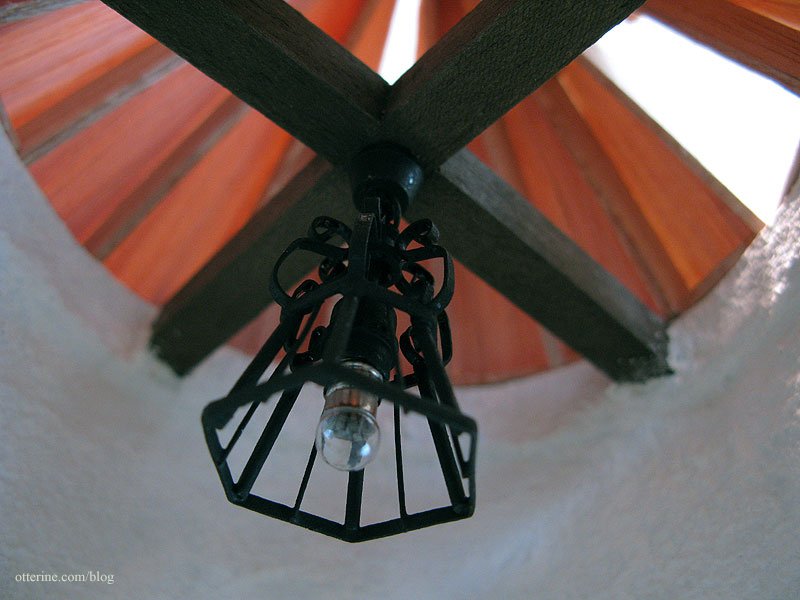
Even if I hadn’t made the tower roof removable in the end, I wanted exposed rafters and holes in the roof. That meant you would be able to see the wire, even if I cut a channel into the balsa beam and painted it.
I opted to hide the wire in plain sight with conduit made from 3/32″ aluminum tubing from my local hobby shop. I eliminated the chain on this light and made it a ceiling fixture. The wire goes up through the beam, through the conduit and out the side of the tower. The end wire runs between the tower and side wall, eventually to be covered with stucco.
To disguise the end of the wire inside, I used a round wooden bead. I painted the conduit on the beam brown to match the wood. I painted the conduit along the wall and the wooden bead warm white to make it blend in with the wall color. I have seen conduit done like this in real life many times. I added a metal doorbell from Sussex Crafts to act as a vintage light switch. Now the illusion is complete. The whole process is detailed in the tower construction post, part 3.
Here is the faux switch for the tower light.
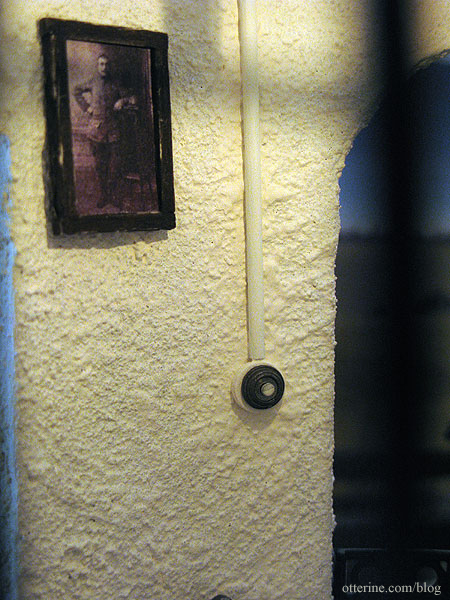
I started to fill in the side baseboard channel with stucco but realized the moisture from the stucco might mess with the spliced wires and I didn’t want to take any chances. Instead, I cut a sliver of builders foam to plug the channel. These channels don’t have to be pretty, they just need to work and be hidden in the end.
